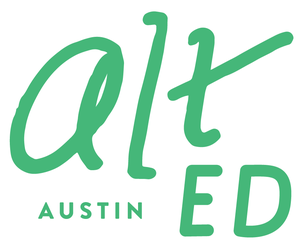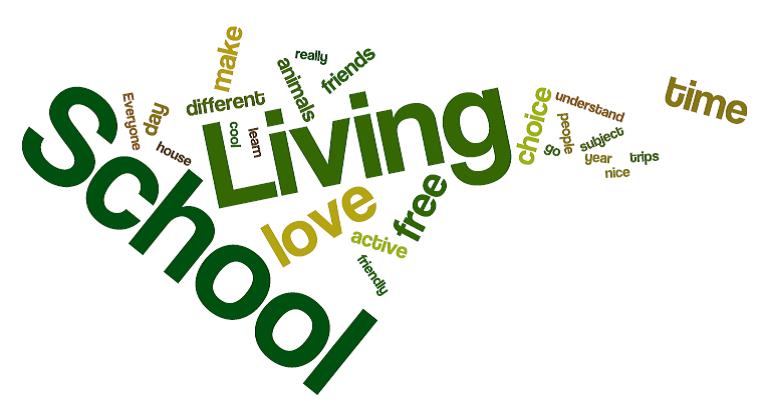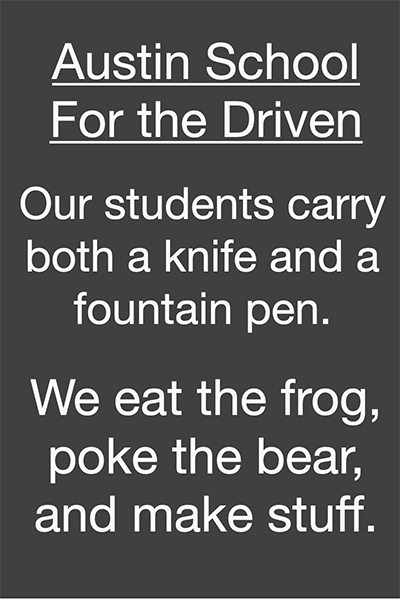Expert kids
/What happens when you allow kids to follow their own passions at school, to delve deeply into matters that truly fascinate them? They become experts, in the best sense of the word. And they love to share their expertise.
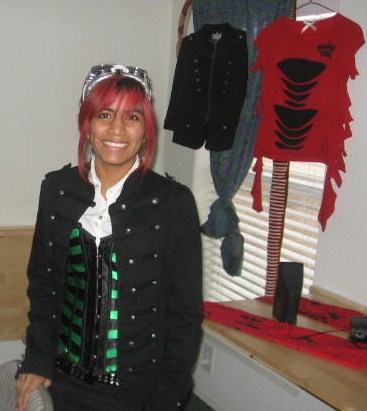
I met a bunch of young experts at the Inside Outside School’s Expo Day last month. Their areas of expertise were richly varied, ranging from the physics of electricity to the diversity of aquatic mammals, from the history of the Texas Rangers to the development of punk fashion, from the culture of Jordan to the uses of herbal remedies. The media they used to present their discoveries were equally varied, including music, a diorama, a Q&A session, a PowerPoint presentation, written reports, edible offerings, a map, a blog, and an original art portfolio.
Each student had been encouraged to choose a subject for independent study and had spent much of the semester immersed in it. I do not mean “choose” as it is euphemistically used in so many classrooms to mean, for example, “Pick a country in Europe and write a report about it.” I mean that at the beginning of the semester teacher/directors Deborah Hale and Kathy Cauley spent a great deal of time with individual students exploring their interests, ideas, dreams, talents, and goals, with their ears tuned to the limitless possibilities; then they helped them find a focus on what they were most excited to learn and how they wanted to go about doing it.
Throughout the semester Kathy and Deborah frequently checked in with students about their independent projects, offering guidance, support, provocative questions, and resource suggestions as needed. Students found ways to help each other get “unstuck” or re-inspired. Some found they needed a new angle after a few weeks of research. Some decided to do two or more projects rather than one. Others struggled to decide the best way(s) for presenting their discoveries, despite the school’s overall emphasis on process over product. In the end, they all seemed, to me and to other Expo Day visitors I interviewed, to be confident in their knowledge, eager to share it, and hungry for more.
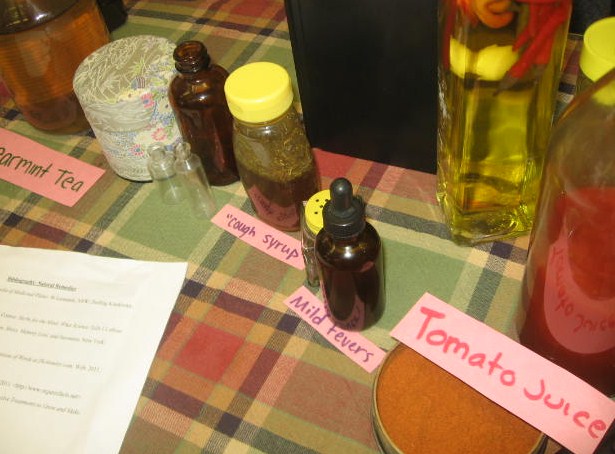
The Expo brought back memories of my fifth grade CLUE class, by far the best educational experience of my kindergarten through high school years. CLUE (short for Creative Learning in a Unique Environment) was an innovative program in the Memphis public schools that emphasized critical thinking skills, creativity, collaborative problem solving, interdisciplinary study, and independent projects. There, for a few hours each week, we escaped the confines of our regular classroom desks and were set free to pursue things we cared about. One CLUE kid I know spent most of her school year writing and illustrating a novel; another became uber-skilled in origami; another plotted the course of a certain star. For my independent project I chose to study the creation of the Panama Canal (it had captured my imagination the previous summer during a family trip to visit relatives in Panama). To this day, I feel a strong connection to this subject and remember it in more detail than anything I ever studied for a test—because it was mine.
A quick online search tells me that the CLUE program is still going strong in Memphis, although, naturally, it has evolved. Unfortunately, it is still restricted to a small percentage of the public school system’s students. I’ve always thought that kind of learning experience should be available to every child, everywhere. It is heartening to know that kids at the Inside Outside School (as well as some other alternative schools in the Austin area) get the encouragement, resources, and time to cultivate their curiosity, practice their passions, and share their expertise.
